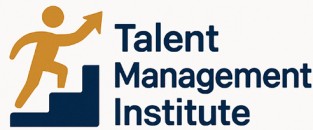Understanding the Importance of Unique Employee Benefits
Why Distinctive Employee Benefits Matter
In the ever-evolving landscape of the workplace, organizations have come to realize that offering unique employee benefits is more than just an attractive addition to a compensation package. It's a strategic approach aimed at not only attracting but also retaining top talent. Employers are aware that the traditional benefits package needs an update to meet current employee expectations and demands.
With competition for skilled employees at an all-time high, organizations know that salary alone is not sufficient to keep their workforce motivated and satisfied. Employees now prioritize work-life balance and have diverse needs ranging from health benefits to financial wellness. Employers who offer innovative perks are not only meeting these needs but also setting themselves apart as desirable places to work.
Offering innovative perks such as wellness benefits, educational support, and even pet insurance reflects a deeper understanding of employee well-being. For instance, health insurance may address physical health, but adding mental health initiatives can greatly enhance overall wellness. These benefits help employees deal with personal challenges, thereby contributing to their productivity and engagement.
Crucially, unique benefits can appeal to varying age groups and family situations, making them inclusive and tailored to a diverse workforce. Whether it's helping employees manage student loans or providing benefits for family members, employers offer these perks to demonstrate their commitment to the holistic well-being of their employees. Not only do these benefits help employees, but they also help businesses stand out in their industry.
Furthermore, as the job market evolves, so too does the notion of what constitutes effective employee benefits. Employers need to continuously innovate and adapt their benefits package to remain competitive. For more insights on the strategic importance of shaping a benefits package that truly resonates with your employees, see how organizations are unlocking the secrets of talent management
here.
Creative Perks That Stand Out
Breaking the Mold with Creative Company Perks
In today’s competitive job market, standing out as an employer often means offering more than just a competitive salary. Employees are seeking benefits that not only enhance their work-life balance but also add a unique value to their employment experience. The possibilities for innovative perks are endless, from wellness benefits that address both physical and mental health to education benefits that cater to professional growth.
Organizations are increasingly offering creative perks such as mental health support, encompassing resources for stress management and mental well-being. Some companies go above and beyond with pet insurance, which is becoming a sought-after addition to the benefits package, allowing employees to care for their furry family members without the added financial stress.
Wellness programs that include gym memberships or access to health-related activities empower employees to pursue a healthier lifestyle. This can have a positive impact not only on the health benefits of the individual employee but also on overall group health within the organization. Additionally, offering flexible work schedules and remote work options can help employees manage their time more effectively, boosting their productivity during working hours.
Creative financial benefits such as student loan assistance can ease long-term economic burdens, while education benefits, like sponsored professional development courses, provide valuable opportunities for career advancement.
These unique employee perks not only highlight an employer's commitment to their team's well-being but also play a crucial role in attracting and retaining top talent. As organizations strive to create a supportive and engaging work environment, integrating innovative approaches to employee perks such as those harnessing advanced learning tools for talent management can greatly enhance employee satisfaction and loyalty.
The Impact on Employee Engagement and Productivity
Boosting Morale and Productivity with Unique Perks
The impact of innovative employee benefits on engagement and productivity is gaining recognition among top employers. Organizations understand that the right benefits package not only attracts top talent but also helps current employees perform their best. Employers offer perks that directly influence an employee's day-to-day work environment and overall job satisfaction.
Integrating unique employee benefits such as flexible working hours, mental health support, and financial wellness programs can significantly enhance morale. Wellness benefits like gym memberships and mental health days promote a healthy work-life balance, making it easier for employees to maintain physical and mental well-being. Creative employee offerings, such as pet insurance, education benefits, or tax-free savings towards a student loan, cater to various interests and needs, proving that personalized benefits can boost productivity.
Employers who accurately assess the needs of their diverse workforce and align their benefits accordingly can foster an environment where employees feel valued and supported. Health benefits packages that include comprehensive health insurance options ensure immediate family members are also covered, alleviating the stress associated with healthcare costs. Such offerings help employees remain focused and dedicated to their tasks.
Analyzing the impact of these innovative perks reveals their substantial role in enhancing workforce morale and productivity. When employers put thought into their benefits strategy and implement creative solutions, they not only retain talent but also empower their workforce to achieve more.
Tailoring Benefits to Meet Diverse Employee Needs
Customizing Benefits for Individual Needs
Understanding that employees come from diverse backgrounds and have different personal circumstances is crucial when designing a benefits package. Employers are increasingly recognizing the need to offer benefits tailored to the specific needs of their workforce, which not only help employees feel valued but also improve overall satisfaction.
Incorporating a variety of benefits such as health insurance, wellness benefits, and even unique options like pet insurance into the benefits package ensures that organizations cater to the broad spectrum of employee preferences. For instance, offering education benefits can be a powerful incentive for those looking to advance their skills, while student loan assistance can be a financial boon for employees burdened by education-related debt.
Moreover, recognizing that mental health is just as vital as physical health, forward-thinking employers offer mental health support as part of their health benefits. This consideration is essential in helping current employees manage work-related stress while maintaining optimal productivity.
Financial wellness is another area where creative employee perks make a significant difference. Employers offering tax-free savings plans or family support initiatives show a commitment to the long-term financial health of their employees, which in turn can increase loyalty and retention.
Employers must regularly assess and adapt their benefits offerings to meet the ever-evolving expectations and needs of their workforce. By doing so, they not only attract top talent but also retain their current employees by providing a comprehensive package that genuinely supports their personal and professional lives.
Challenges in Implementing Unique Benefits
Overcoming Obstacles When Introducing New Employee Perks
Implementing innovative employee perks comes with its own set of challenges. To begin with, employers need to navigate the complexities of tailoring benefits packages that cater to the diverse needs of their workforce. From healthcare costs associated with group health insurance to offering creative wellness benefits that resonate with employees, the task can seem daunting.
One major challenge is managing the financial implications of these unique employee perks. Organizations need to ensure that the benefits remain cost-effective while offering substantial value to employees. For example, integrating pet insurance or student loan education benefits into the employee benefits package requires careful consideration of the company's budget. Maintaining a balance between providing high-quality benefits and keeping costs under control is crucial.
Another significant hurdle is the administrative workload. Implementing new benefits often requires additional time and resources to coordinate efforts across various departments. Employers must work closely with HR professionals to streamline processes, ensuring that the introduction of these perks doesn't overwhelm existing systems or staff.
Employee engagement and communication also play critical roles. Current employees need to be made aware of the new offerings, and understanding their needs through surveys or feedback can lead to more effective implementation. By addressing mental health, financial security with tax-free options, and overall wellness, organizations can tailor benefits that truly help employees.
Finally, legal and compliance issues can pose a challenge. Employers must ensure that their benefit offerings align with regulations, such as those surrounding health insurance and other tax implications. Regular audits and collaboration with legal experts can help mitigate this problem.
Despite these challenges, navigating them successfully can lead to a more engaged and productive workforce. Employers who take the time to address these obstacles create a working environment that attracts top talent and improves employee satisfaction.
Future Trends in Employee Benefits
The Evolving Landscape of Employee Benefits
The future of employee benefits is taking shape with innovations that reflect the changing needs and priorities of today's workforce. As organizations strive to attract and retain top talent, they are exploring a range of unique perks beyond traditional options like health insurance and retirement plans.
Focus on Wellness and Mental Health: There's a growing emphasis on wellness benefits that support mental health and overall well-being. Employers offer packages that may include access to mental health professionals, subsidized fitness memberships, and flexible work schedules.
Technology and Remote Work: With remote work becoming more common, benefits are adapting to this new work environment. For instance, home office stipends and technology allowances are critical in helping employees set up efficient workspaces. These benefits can also include digital wellness apps to help employees manage stress and balance work-life effectively.
Customization and Flexibility: More organizations are tailoring benefits packages to meet the diverse needs of their workforce. This includes offering choices in healthcare plans, pet insurance for pet owners, and family-friendly perks that extend coverage to family members, making benefits more personalized and appealing.
Education and Financial Support: With rising education costs, more companies are including education benefits, such as student loan repayment plans and opportunities for further learning, in their offerings. Some employers are even providing financial planning and tax-free benefits to aid in employee financial wellness.
Challenges and Opportunities: Innovating employee benefits isn't without its challenges. Balancing cost with the value offered to employees, ensuring programs are tax-efficient, and measuring the impact of these perks on productivity are ongoing concerns. Employers must stay ahead by continually reassessing what they offer—a dynamic approach that meets both organizational goals and employee satisfaction.
By staying attuned to these trends, organizations can maintain a competitive edge in the ever-evolving landscape of employee benefits.














